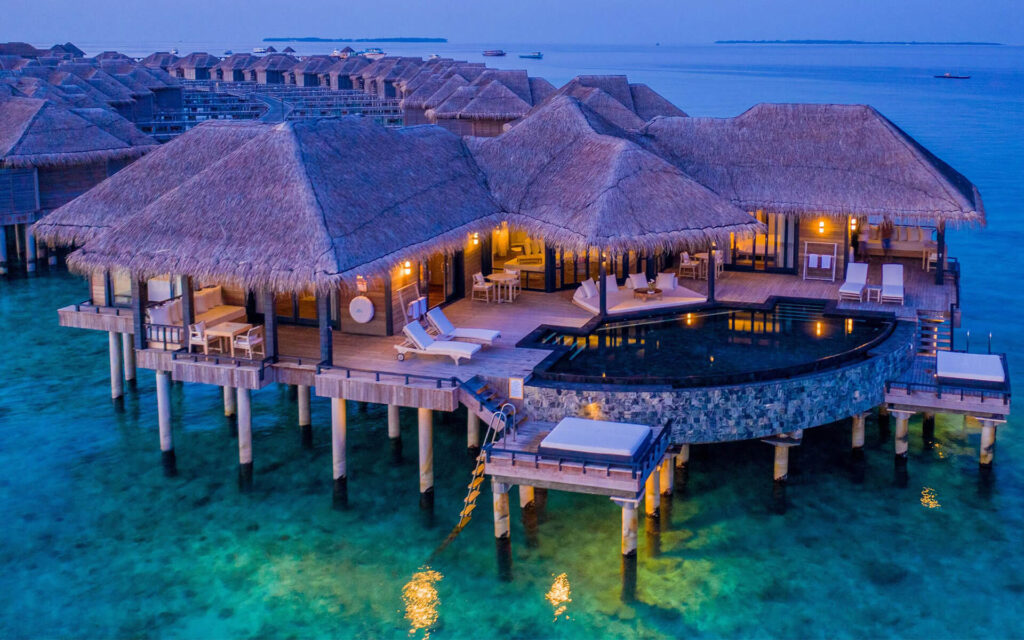The Maldives is a renowned paradise destination, attracting tourists seeking relaxation, luxury hotels, and exceptional service. When planning a trip to the Maldives, it’s important to consider the different tourist seasons and choose the most suitable time for your preferences.
The high season, spanning from December to April-May, sees a significant influx of visitors due to many factors: the desire to celebrate the holidays by the ocean, ideal weather conditions with minimal rain and winds, and comfortable temperatures of around 28-30 degrees Celsius (82-86 degrees Fahrenheit). The high season offers an uninterrupted beach experience throughout the year and is popular among travelers. It’s advisable to book your trip well in advance due to the high demand and increased prices during this period.
The low season begins in late May and brings rain, high waves, thunderstorms, and winds. While the weather may not be as pleasant, the showers are typically short-lived, and the sun reappears after a few hours. One advantage of traveling during the low season is the significantly reduced cost of travel packages, allowing you to save money. September, October, and May offer sunnier days amidst the rainy weather, with temperatures ranging from 27-29 degrees Celsius (81-84 degrees Fahrenheit).
For windsurfing enthusiasts, the Maldives supplies an excellent destination. The windsurfing season officially starts in February when the wind intensifies, and waves become favorable for beginners. From June to August, the wind strengthens further, attracting experienced windsurfers and kiteboarders. The season continues into the fall but gradually calms down in mid-November.
Diving enthusiasts will find the Maldives to be a world-famous diving destination. With a tropical climate and average temperatures around 30 degrees Celsius (86 degrees Fahrenheit) year-round, the Maldives offers an ideal setting for beach lovers and underwater explorers. The best diving months are January to April, featuring average water temperatures of 27-30 degrees Celsius (80-86 degrees Fahrenheit) and excellent visibility ranging from 15 to 40 meters (49-131 feet), depending on the season and location. Visibility is slightly reduced during the rainy season from May to August due to high plankton density, but this also attracts marine life such as manta rays and whale sharks. Currents vary based on tides and location, from calm in lagoons to strong in channels.
The Maldives boasts over 1,500 fish species, vibrant coral reefs, grottoes, and caves harboring preserved shipwrecks. The best dive sites for meeting reef sharks are Lhaviyani, North and South Male, Vaavu, Meemu, Laamu, and Gaafu atolls. Notable dive sites include Rasdhoo Madivaru, Mushi Mas Mingili Thila, Maaya Thila, Hafza Thila, Brocken Rock, Kudarah Thila, Halaveli Wreck, among many others. Diving conditions are not favorable during the summer due to rough waves, making it challenging to see underwater marvels. It is essential to exercise caution in areas with strong undercurrents and dive under the guidance of experienced instructors.
The Maldives, consisting of 1,192 coral islands grouped into 26 coral atolls in the Indian Ocean, offers a diverse range of activities. While diving in the clear waters of the Indian Ocean may not always be possible, the Ari Atoll is a recommended location for meeting big pelagic fishes and is often visited by liveaboards. The peak diving season occurs from January to April when the water is clear and transparent. October is not ideal due to high plankton levels. The Maldives provides excellent dive sites suitable for both experienced and beginner divers, with depths ranging from 5 to 40 meters (16-131 feet).
Please note that during the summer, diving conditions are unfavorable due to rough waves, and caution is needed in the presence of strong undercurrents.


